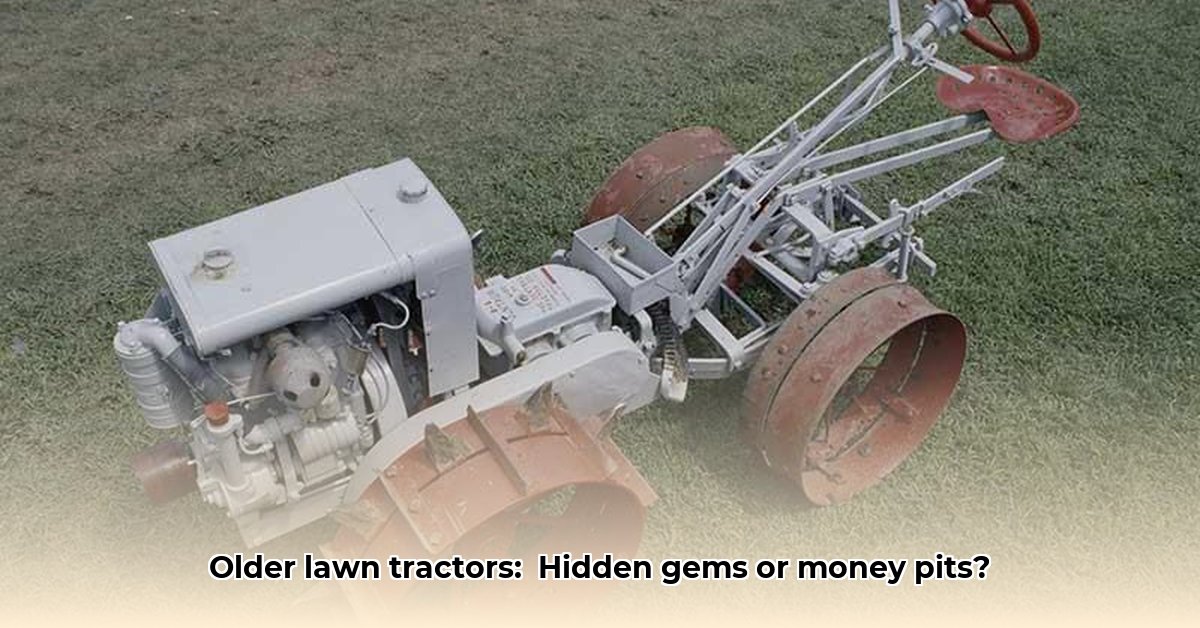
Old Lawn Tractors: A Collector's Guide to Buying, Restoring, and Maintaining
The satisfying rumble of a vintage lawn tractor—it’s more than just yard work; it's a connection to simpler times and a testament to enduring engineering. This comprehensive guide delves into the world of classic lawn tractors, offering insights for both seasoned collectors and newcomers alike. From identifying valuable models to mastering essential maintenance, we equip you with the knowledge to navigate this rewarding hobby. For additional resources on finding vintage tractors, check out this helpful website: used tractors.
Identifying Desirable Models and Their Value
The market for vintage lawn tractors is surprisingly robust, with certain brands commanding considerable value. Sears Craftsman, Jacobsen, and even select Panzer models are highly sought after by collectors. Value is determined by a combination of factors including rarity, condition, and originality. A pristine, original model will fetch a significantly higher price than one requiring extensive restoration. Think of it like classic cars – condition and rarity are king.
Did you know that a meticulously restored Sears Craftsman can fetch thousands of dollars? The key is to research thoroughly before purchasing. High-quality photographs are essential; a well-documented listing with multiple angles and detailed close-ups is highly valuable. Specific model variations and the availability of parts also significantly impact the worth of a vintage tractor.
Assessing Condition and Planning Your Restoration
Before committing to a purchase, meticulously inspect the tractor. Check for missing parts, rust, and any signs of damage. A thorough examination is paramount. Don't hesitate to ask the seller detailed questions – their responses often reveal much about both the tractor's condition and their trustworthiness.
Restoring a vintage tractor is a rewarding but substantial investment of time and money. Replacing parts, particularly for less common models, can be expensive. Before embarking on a restoration project, carefully assess the necessary repairs and their costs. It's easy to underestimate the time involved; planning is crucial for avoiding unpleasant surprises.
Step-by-Step Guide to Assessing an Old Lawn Tractor
Conduct a thorough evaluation using this step-by-step guide:
Engine Inspection: Examine the engine closely for rust, damage, and signs of previous servicing. Look for leaks and assess the condition of components such as the carburetor and spark plugs. A well-maintained engine is a strong indication of responsible previous ownership.
Deck Examination: The cutting deck is critical. Inspect it for damage, rust, significant dents, or worn blades. A damaged deck often requires expensive repair or replacement.
Functionality Test: If possible, run the engine. Listen for unusual noises (knocking or grinding) which might signal underlying problems. Smooth, quiet operation is a positive sign.
Transmission Check: Check for leaks or difficulties in shifting gears. Transmission problems are costly to repair and can render the machine unusable.
Frame and Body Assessment: Inspect the frame and body for cracks, serious corrosion, or any other structural damage. A solid frame is vital for safe and reliable operation.
Buying, Selling, and Navigating the Market
Finding your dream vintage tractor can be exhilarating! Online marketplaces such as eBay and Craigslist are excellent starting points, but don’t overlook local classified ads, auctions, and even neighborhood sales. A reputable seller will be transparent about the tractor's history and any known defects. Price negotiation is standard practice, especially if you've identified issues during your inspection. When selling, remember that clear, high-quality photos and a detailed, honest description are critical for attracting serious buyers. Transparency builds trust and increases your chances of a successful sale.
Maintenance and Safe Operation
Regular maintenance is crucial for preserving your vintage tractor's longevity and ensuring safe operation. Consider this preventative care. This includes tasks like changing fluids and filters, cleaning the air filter, sharpening the blades, and inspecting belts and cables. Good maintenance ensures efficient and safe operation. Always prioritize safety; never operate the tractor without taking the necessary precautions. Always consult and carefully follow the owner's manual.
Community and Resources
Connecting with other enthusiasts is immensely valuable! Online forums and clubs dedicated to vintage tractors provide a wealth of information, support, and camaraderie. These communities assist with parts identification, troubleshooting, and connecting with fellow enthusiasts. It's a fantastic way to learn from experienced owners.
Pros and Cons of Owning a Vintage Lawn Tractor
| Pros | Cons |
|---|---|
| Unique character and charm | Requires mechanical skills and regular maintenance |
| Often built to last longer than modern models | Parts can be hard to find and expensive |
| Potential increase in value over time | Restoration can be costly and time-consuming |
| Sense of accomplishment from restoration | Needs storage space |
This journey requires patience and realistic assessment of time, cost, and skills. Happy hunting, and happy mowing!